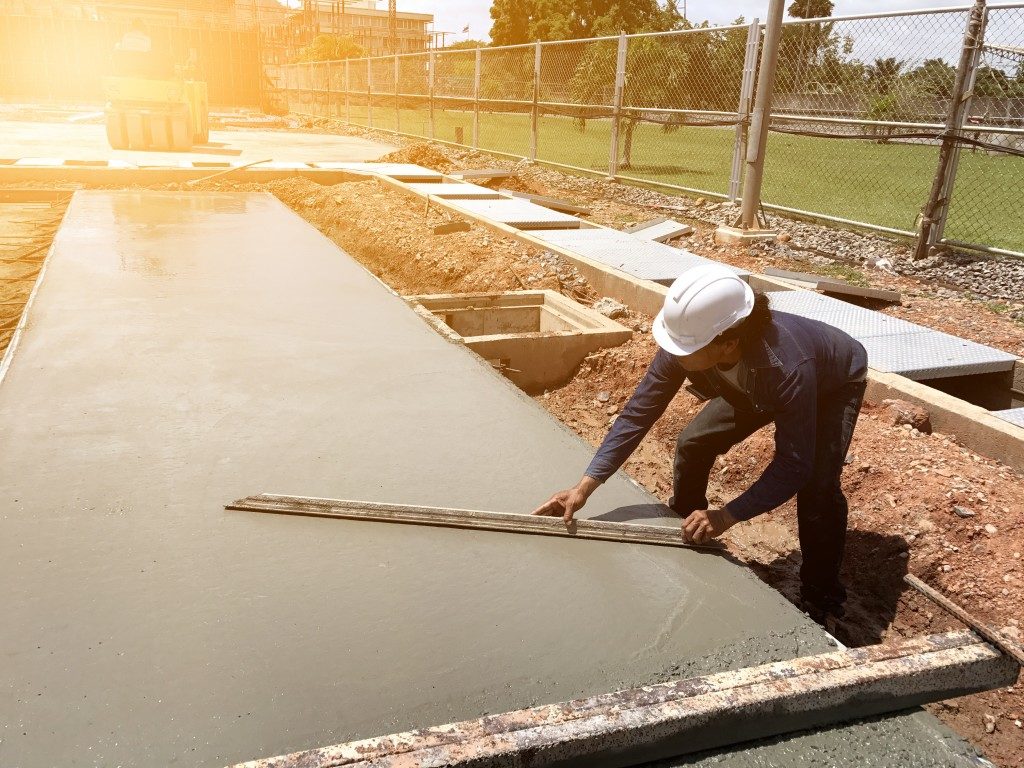Concrete remains one of the strongest and most durable construction materials in modern times. There are now several materials on the market that boost the strength of concrete for various applications. This, unfortunately, does not mean concrete structures are fail-safe. One of the elements that cause considerable concrete damage is water.
Moisture in your concrete can lead to various forms of damage that might cause a structure to sink. In these cases, concrete leveling will be the solution for your Salt Lake City construction project. Mud jacking, foam injection, stitch welding, and the use of helical piers are some of the methods used to level sunken concrete.
Water is an essential element of concrete mixing, but it can affect the integrity concrete when used in excess. The excess water can also come from groundwater, poor ventilation, leaks, high humidity levels, and the lack of a vapor barrier in your structure. Here are the effects of moisture in concrete:
Increased Spaces between Cement Grains
High moisture content can expand the space between the cement aggregates and thus affect the compaction of your building. This increased space also extends the water demand for your concrete, further decreasing the strength of concrete. Moreover, the resulting voids in your cement aggregates will be filled with air when the water evaporates. Trapped air in your concrete will reduce its strength by at least 40%.
Raised pH Levels
The humidity levels and the pH level of concrete are related. An increase in humidity will also increase the PH level and temperature of concrete. The rise in pH levels causes the adhesive bonds in cement to slowly fail. Heat, on the other hand, causes laid concrete to dry too fast and results in a porous and less structured product. The ions in water also cause the carbonation of concrete in the presence of acid rain and salts. The resultant calcium carbonate is acidic and reduces the strength of concrete while corroding its steel reinforcements, eventually causing the cracking and collapse of your structure.
Microbial Growth
Moisture, high temperatures, and a porous structure form the perfect ground for the breeding of bacteria, mold, and other microorganisms. Though concrete might not have organic materials to support their growth, these organisms feed on salt, pollen, dust, and other microorganisms. They produce particles excreting acids that, in turn, degrade the concrete’s integrity and strength.
Dusting

The infiltration of water in dried concrete or using too much water in your concrete mix will cause its fine aggregate to settle at the top of your structure. When this aggregate hardens, it becomes a loose, dust-like powder. The continuous dusting of your structure eats away at the concrete and thins it consequently, minimizing its strength.
Thankfully, there now exists several waterproofing options for concrete to avert the above effects of water on your structure. The leading ones include sheet, torch on, cementitious, bituminous and polyurethane liquid membranes and epoxy coatings. Concrete should also be adequately cured when being laid to prevent water damage. The installation of the membranes and curing process during your concrete’s repair should be expertly handled to guarantee their water damage protection.

